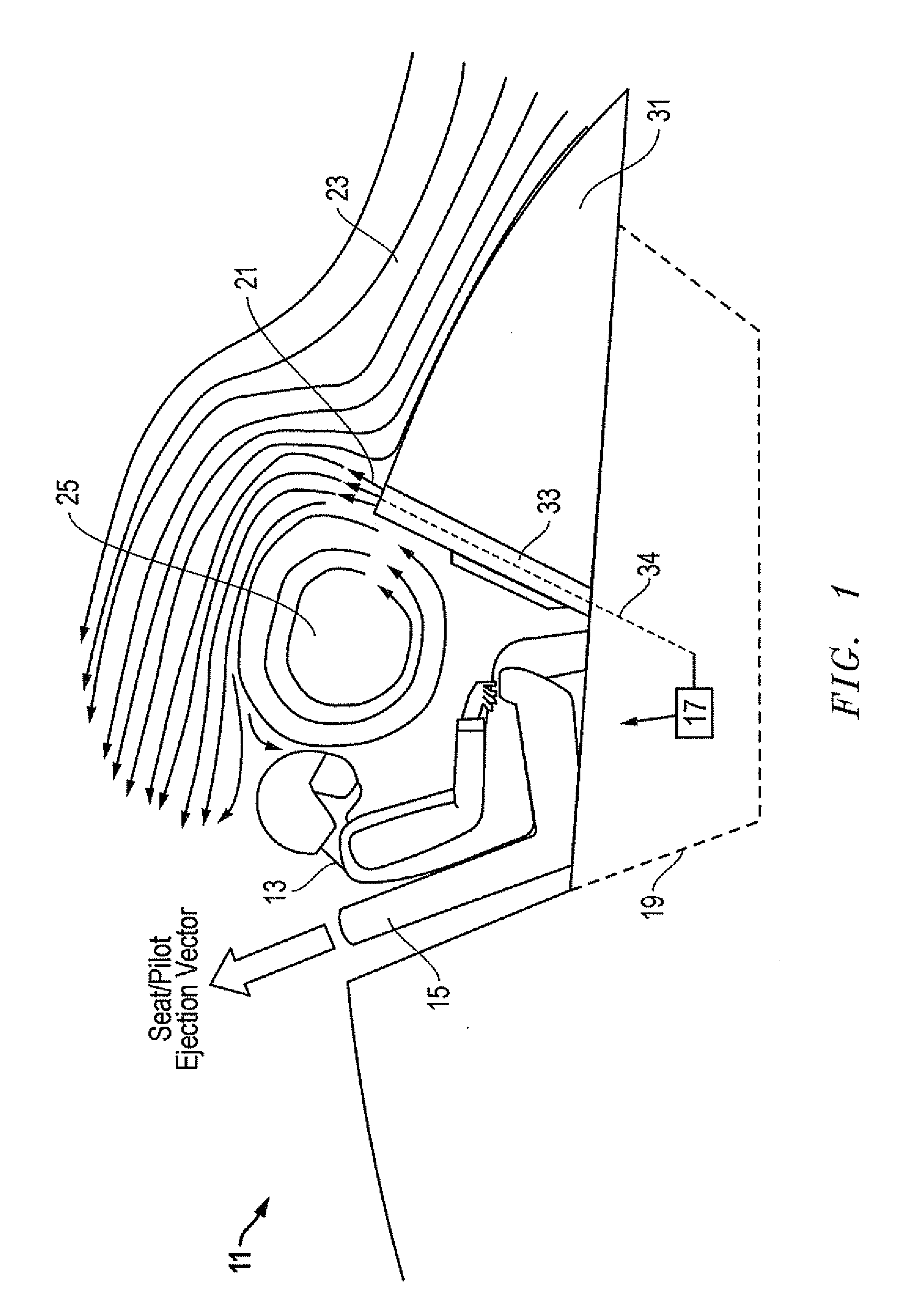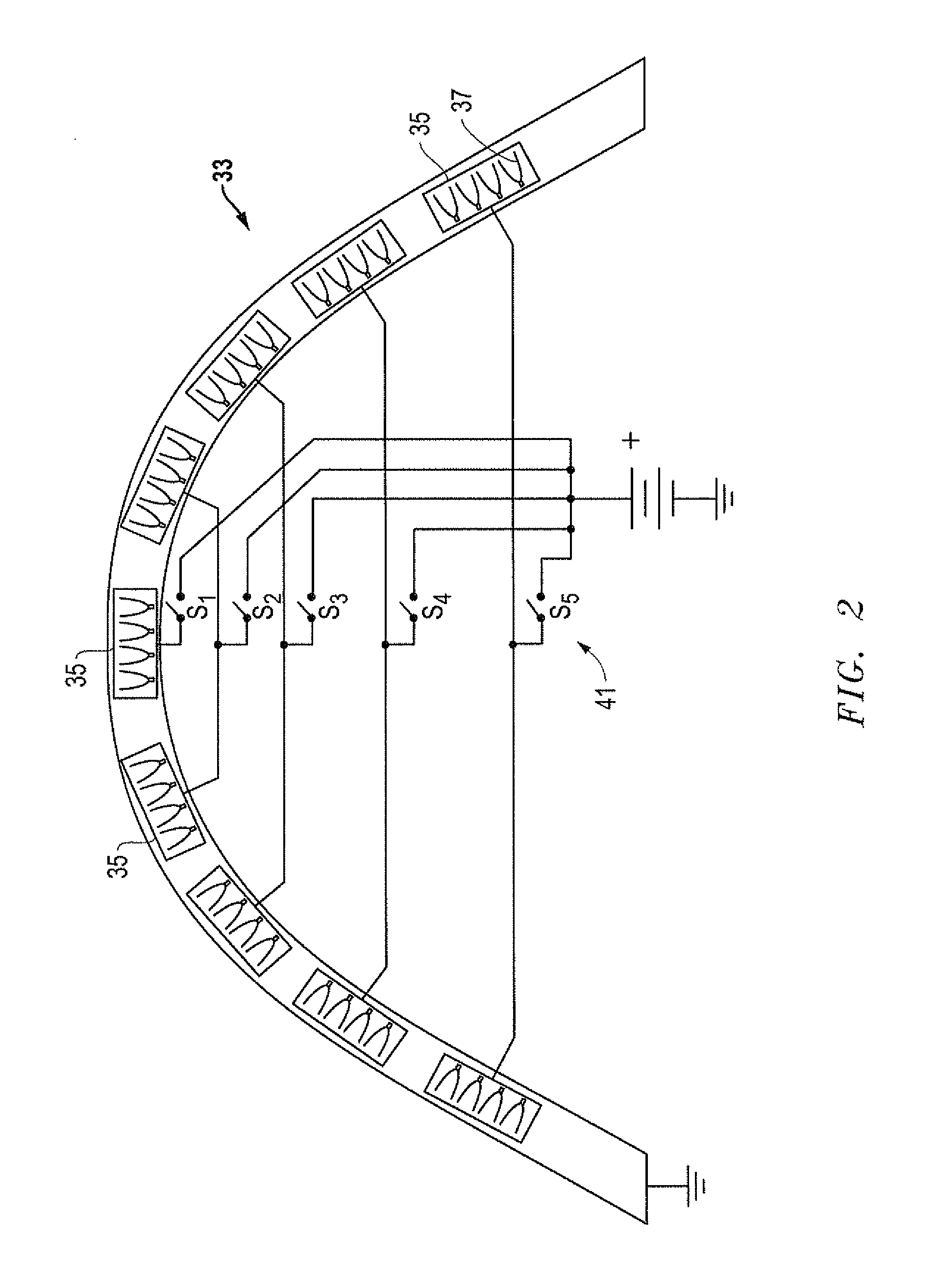System, method and apparatus for windblast reduction during release or ejection from aircraft
a technology of windblast and release or ejection, which is applied in the direction of aircraft ejection means, emergency apparatus, launching weapons, etc., can solve the problems of particularly common snap back neck injuries, facial and/or eye tissue damage, etc., to reduce the impact of flowfield forces, reduce the probability of injury-free or low-injury ejection, and reduce the weight penalty of aircraft from incorporating the invention
- Summary
- Abstract
- Description
- Claims
- Application Information
AI Technical Summary
Benefits of technology
Problems solved by technology
Method used
Image
Examples
Embodiment Construction
[0018]Referring to FIGS. 1-5, embodiments of a system, method and apparatus for reducing the impact of flowfield forces on objects released, launched or jettisoned from high speed aircraft during flight are disclosed. Although the invention is primarily depicted and described in FIGS. 1-3 and 5 as providing a solution for overcoming ejection windblast injuries to pilots and increases the probability of injury-free or low-injury ejection, the invention has still other applications. For example, as shown in FIG. 4, the invention also is suitable for reducing the intensity of flowfield forces that act on other types of objects that are released or launched from aircraft, such as bombs, missiles, fuel tanks, etc.
[0019]In one embodiment, the invention comprises a system for reducing the impact of flowfield forces on objects ejected or launched from an aircraft during flight. FIG. 1 illustrates an aircraft 11 having an object (e.g., a pilot 13 in a seat 15) releasably mounted to the aircr...
PUM
 Login to View More
Login to View More Abstract
Description
Claims
Application Information
 Login to View More
Login to View More - R&D
- Intellectual Property
- Life Sciences
- Materials
- Tech Scout
- Unparalleled Data Quality
- Higher Quality Content
- 60% Fewer Hallucinations
Browse by: Latest US Patents, China's latest patents, Technical Efficacy Thesaurus, Application Domain, Technology Topic, Popular Technical Reports.
© 2025 PatSnap. All rights reserved.Legal|Privacy policy|Modern Slavery Act Transparency Statement|Sitemap|About US| Contact US: help@patsnap.com



